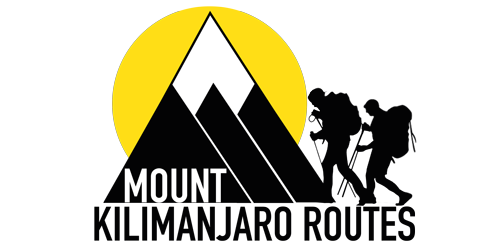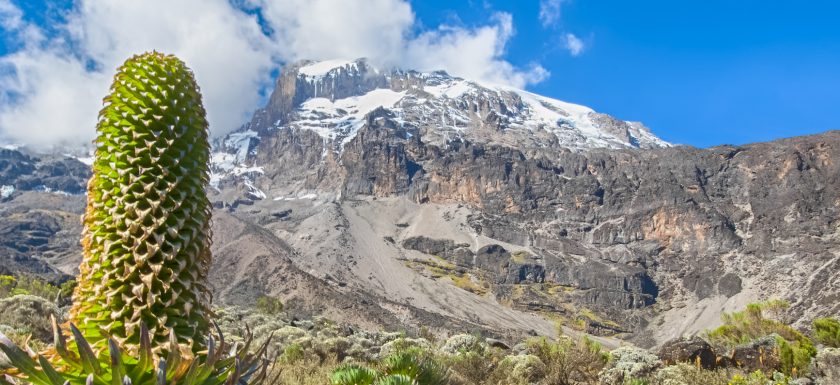FAQ
Kilimanjaro Frequently Asked Questions
Do I have to be extremely fit to climb Kilimanjaro?
You don’t have to be a professional athlete to successfully reach Kilimanjaro’s peak. However, as with any physical endeavour, if you are in good physical condition, you will enjoy the climb more and become less fatigued along the route. If you are not very active now, don’t worry. Upon booking, Mount Kilimanjaro Routes will send you a detailed Kilimanjaro Training Guide which is certain to get you prepared for your journey.
Read More About Training For Your Kilimanjaro Climb
What is the difference between the Rongai, Machame, Umbwe, Lemosho, Marangu, and Shira routes?
On the Marangu route, you will be staying in communal huts as opposed to camping in tents, and you hike up and down the same path.
The Rongai, Shira, Lemosho, Umbwe and Machame routes are proper camping routes and are considered more scenic than the Marangu because the ascent and descent routes are different. The Rongai route is the only route beginning on the north side of the mountain and you descend down the Marangu route.
The Lemosho and the Shira routes traverse Kilimanjaro from the west and descend down the Mweka route. The Shira route takes you on the far west side, and is essentially the same as the Lemosho route, though you start at a higher altitude.
Machame and Umbwe begin on the southwest side of the mountain and join up at the Barranco Camp for the remainder of the climb. Umbwe. Machame takes 3 days to reach Barranco, allowing for proper acclimatization.
How much weight can I put in my duffle bag?
The maximum weight that a porter can carry in your duffle bag is 33lb/15kg and the porter community is very strict about that weight limit. This weight is always highest on the first day because as you consume your electrolytes, snacks and other consumables, the weight of your daypack and duffel will naturally reduce. Your duffle will be weighed at the hotel on the morning of your climb to ensure it meets the regulations. It is recommended that you weigh your gear prior to arriving in Tanzania so there are no surprises.
Do I have to carry my own gear?
The porters will carry your duffle bag and the majority of your supplies you will need for your trek. This makes it easier for you to get to the top! Daily you will just carry your water (~4L), snacks and change of clothing, as weather changes rapidly on the mountain and temperatures can vary wildly from morning to afternoon. Most people’s daypacks weigh less than 15lb/6.8kg.
How much weight do I have to carry on the climb?
All you need to be concerned about with a Mount Kilimanjaro Routes trip is the weight of your Kilimanjaro daypack and water which will average around 15lb/6.8kg.
What is the food like on Mount Kilimanjaro?
The food on the mountain has been specifically designed to give you the needed energy to reach the top. You will be surprised by the creativity of our food service personnel on the mountain. Can you imagine being at 15,000 ft and getting freshly baked bread? There is nothing like it in the world! Most meals are similar in makeup and are very balanced with a heavy portion of carbohydrates, as that is the fuel you need to get to the top!
Sample Breakfast: Porridge, Fried Eggs, Sausage, Potatoes, Toast, Peanut Butter, Jams, Coffee, Tea, Milo (you will love this chocolaty drink)
Sample Lunch/Dinner: Soup, Spaghetti and Meatballs, Bread or Biscuits, Coffee, Tea, Milo
Is the water safe to drink on the mountain?
All of the water you will be receiving on the mountain will be thoroughly boiled prior to you receiving it, but many climbers prefer to take supplemental precautions such as purification tablets or a simple Steripen to make certain you are safe.
What is the real success rate of climbers who reach the top of Kilimanjaro?
The rate of failure is high because there are a lot of climbers who try to do the climb too quickly and cheaply. This is very difficult and the rate of success is lower than 50%. If you take your time and go pole, pole (Swahili for slowly, slowly) then your chance of success dramatically goes up. It is because of this reason alone that we recommend only 6, 7 and higher day treks up the mountain. The money you save on a 5-day trip is not worth the misery of not making it!
On the trail, there is not much to do when you get to camp other than sit in your tent and wait for dinner, so take your time and enjoy the sights and your fellow climbers during your trek. Also the slower you go, the more energy you conserve, giving you what you need to make it to the top.




